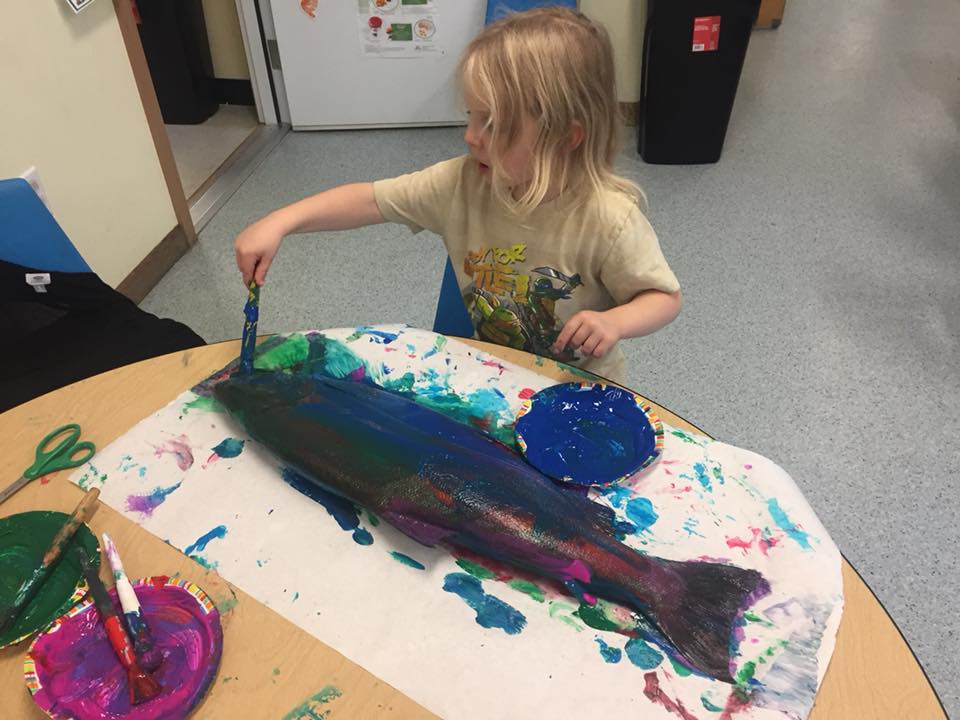
Goal 25: Children show curiosity and interest in learning
TODDLERS MAY
- Explore the immediate environment (ask about a new object he/she finds, actively search through collection of toys).
- Ask simple “wh” questions (why, what, where).
- Try new ways of doing things and begin to take some risk.
- Initiate play with others.
- Choose one activity over another and pursue it for a brief period of time.
- Show interests in wanting to take care of self (dressing).
- Initiate activities at caregivers’ suggestions.
- Seek and take pleasure in both new and repeated skills and experiences.
YOU CAN
- Make child’s surroundings safe and inviting to encourage exploration.
- Provide child with a variety of safe and interesting objects that increase interest.
- Interact with child by asking simple questions and responding to his/her questions.
- Wonder aloud with child about why things happen.
- Read and tell diverse stories that introduce child to many people, places, and cultures.
- Try new tasks with child and describe them.
- Support child’s choices during daily activities (selecting books to read together)
- Provide consistency in the environment and the routine so child develops confidence and a sense of mastery.
Goal 26: Children persist when facing challenges
TODDLERS MAY
- Show interest in favorite activities over and over again.
- Complete simple projects (3- to 5-piece puzzle, stacking blocks on top of one another).
- Continue to try a difficult task for a brief period of time (build a block structure for 3 to 5 minutes).
- Insist on some choices (what to wear, completing a project).
- Seek and accept assistance when encountering a problem.
- Listen and participate in story time (turning pages of book, using hand motions such as clapping at appropriate times).
YOU CAN
- Provide time for child to engage in sustained activities.
- Respond to child’s requests for assistance.
- Limit environmental distractions to help child sustain attention to activities (turn television off while child plays in the room).
- Talk with child about his/her activities using open-ended questions (“How did you do that? Tell me more.”).
- Involve child in active movement and language games (fingerplays, hokey pokey, freeze dance).
- Tell the child what he/she is doing while he/she does it (you are climbing the slide, and now you’re coming down.)
Goal 27: Children demonstrate initiative
TODDLERS MAY
- Use strategies to manage strong emotions (get help, cover eyes, move away).
- Use words such as “stop” or “no” in a conflict.
- Communicate to caregivers when they are hungry or tired.
- Try different ways of doing things.
- Identify own interests, feelings, and needs.
YOU CAN
- Respond and acknowledge the child’s emotions including pride, sadness, frustration or happiness.
- Provide emotional and physical comfort when child is distressed.
- Modify environment to lessen stress.
- Facilitate consistent routines and structure.
- Model self-calming strategies.
- Create a comfortable environment that reflects family’s culture.
Goal 28: Children approach daily activities with creativity and Imagination
TODDLERS MAY
- Invent new uses for everyday materials (bang on pots and pans).
- Approach tasks experimentally, adapting as the activity evolves.
- Display an understanding of how objects work together (get the dustpan when adult is sweeping the floor).
- Enjoy opportunities for pretend play and creating things (“cooking” dinner for adult, feeding pretend food to adult).
- Pretend and use imagination during play.
- Use creative language to describe events.
- Build with blocks and other manipulatives.
- Play with dolls, costumes and acts out animal roles.
- Pretend to be in new and familiar places with new and familiar roles.
- Create an art project and with a simple story to accompany the artwork.
YOU CAN
- Provide child with art materials and a place to use them without adult-created models or specific instructions.
- Provide opportunities for child to remain absorbed in play.
- Engage child in creating and completing projects using different media (clay, collage, paint, music, dance, chalk, box construction, etc.).
- Encourage child to talk about and revisit his/her creative work.
- Use open-ended questions and descriptive language when interacting with the child.
- Make sure child has props from own culture to support pretend play.
- Encourage child to pretend, make-believe, and use his/her imagination.
- Engage child in narrating or dictating a story about a picture he/she drew.
Goal 29: Childen learn through play and exploration
TODDLERS MAY
- Substitute similar objects (stack boxes like blocks).
- Realize that behaviors can precede events (“If mom or dad put the pot on the stove, she/he is going to cook something to eat.”).
- Alter behavior based on a past event and builds on it (hand-washing prior to mealtime).
- Relate an experience today to one that happened in the past (hand-washing prior to mealtime).
YOU CAN
- Think “out loud” and talk about ideas with child using descriptive language (“you remembered where the puzzle piece fits.”)
- Invite the child to share thoughts and ideas about the world around him/her.
- Provide materials that are similar but produce different results (crayons, markers, paint).
- Narrate child’s play to him/her by describing what you see and hear.
- Demonstrate, explain and provide opportunities for child to think about and avoid negative or dangerous behavior (“The stove and iron are hot”).